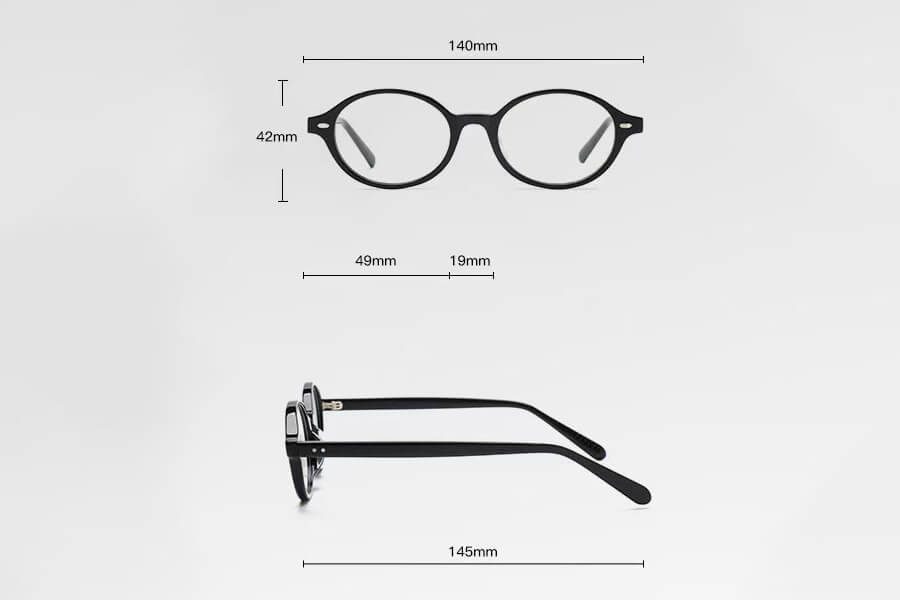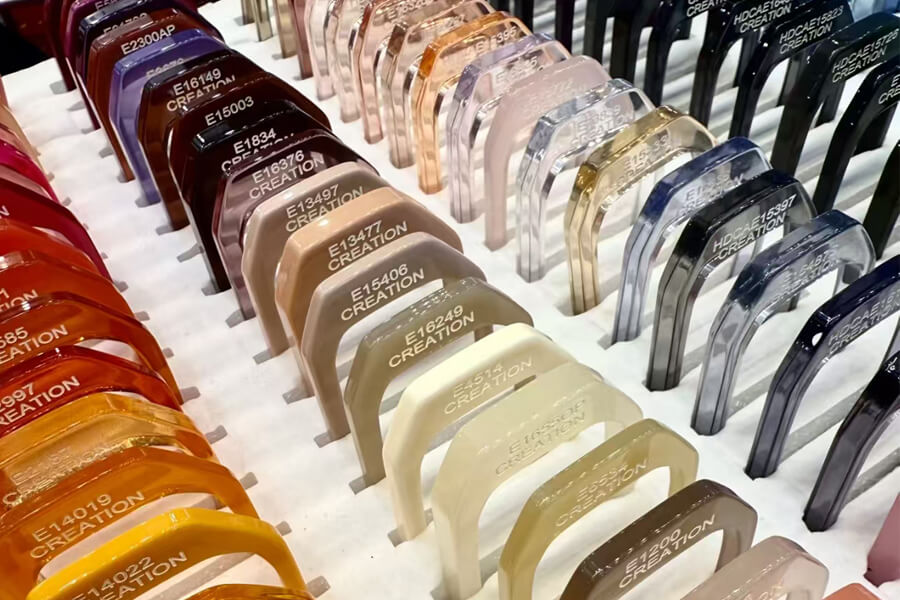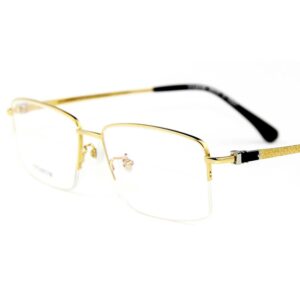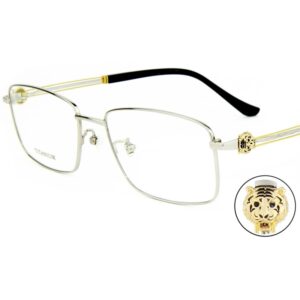China has rapidly become a manufacturing powerhouse, producing a significant portion of the world’s consumer goods. For many companies, importing from China has proven to be a profitable global sourcing strategy. This is especially true for eyewear buyers and distributors looking to capitalize on high-quality products at competitive prices. If you’re considering importing eyewear from China, you’ve made a smart choice.
Out of the 195 countries globally, 81 countries import various products from China—this is a significant market. So, whether you are an eyewear retailer, distributor, or brand owner, importing eyewear from China can be a lucrative opportunity.
Eyewear products from China, such as sunglasses, prescription glasses, and sports goggles, are known for their cost-effectiveness, quality, and wide variety of styles. They protect eyes from various elements like:
- Excessive sunlight
- UV radiation
- Dust and debris
- Impact during sports
- Environmental hazards
- And more.
As you can see, the effort you put into importing eyewear from China is well worth it. However, this process is not without its challenges, particularly for newcomers. Importing can be time-consuming, complex, and costly if not handled correctly.
Longer shipping times, regulatory fees, rising or fluctuating distribution costs, and unforeseen delays can all erode expected profits.
Nevertheless, by following the right guide, you can successfully import eyewear from China and benefit from it. That’s where we come in. We support you every step of the way. Below is our step-by-step guide on how to import eyewear from China.
Let’s get started.
Step 1: Find the Best Source for Importing Eyewear from China
1. Using Google to Find Manufacturers

The first place most people turn to for finding answers is Google. Similarly, Google will provide a list of the most relevant results for your search.
Google has recently updated its page-ranking algorithms, which helps users distinguish between reliable websites and malicious ones.
You must narrow down the list of manufacturers to those that best suit your needs from the results you find. Afterward, you’ll contact them to determine which manufacturer you want to work with.
A major drawback of using Google to find manufacturers is that you might not find a single manufacturer that produces all the different types of eyewear you need. This could force you to source products from multiple manufacturers, which can be both expensive and time-consuming.
2. Using Alibaba to Find Manufacturers

Alibaba is one of the largest e-commerce platforms in China and globally. Thanks to its popularity and massive user base, you can quickly find various eyewear manufacturers offering a wide range of products.
However, as an open marketplace, Alibaba can also be a breeding ground for scammers. Additionally, Alibaba’s ranking system can be manipulated by companies that pay for higher rankings but may not offer quality products.
Therefore, be extra cautious when using Alibaba to find manufacturers.
3. Attending Trade Shows to Find Manufacturers

International trade shows and exhibitions are excellent opportunities for buyers and manufacturers to establish connections and secure reliable partnerships. Attending these events allows you to see and purchase samples of the products you’re interested in.
This helps you avoid the disappointment of importing products you’ve never seen before. Exhibitions also offer the potential to build a strong business network, as you can engage in face-to-face interactions with sellers and buyers.
Unfortunately, trade shows are not held frequently, but if you are willing to travel to other countries to attend these events, it can be worth it. You’ll gain valuable knowledge to take informed steps in the future.
If attending in person is not possible, make sure to leverage these opportunities when they appear in your local area.
Step 2: Communicating with Manufacturers
Avoid These Mistakes When Contacting Manufacturers
Manufacturers receive numerous messages and emails daily from potential clients. To avoid being overlooked, keep your emails short and to the point. Lengthy emails may not get the attention you desire. Instead, follow up with detailed information after receiving a response.
Requesting too little may lead manufacturers not to take you seriously. If unsure, consider calling the company to clarify your needs.
Step 3: Visit Eyewear Manufacturers
If you want to secure high-quality eyewear, there’s no substitute for an on-site visit. Visiting the manufacturer allows you to meet the team, understand the production process, and inspect the facilities.
1. Visit the Product Showroom

When you visit a manufacturer, you’ll have the opportunity to tour their showroom, where they showcase their various eyewear products in an attractive manner. This visit will allow you to assess the quality, design, and variety of products available.
2. Visit the Production Line

By touring the production line, you can observe the entire manufacturing process, from raw material handling to the final assembly. This insight is invaluable for evaluating the manufacturer’s capabilities and quality control measures.
3. Benefits of On-Site Visits
Visiting the manufacturing site can significantly benefit your business relationship. It shows the manufacturer that you are serious about purchasing their products, which can lead to better pricing and service.
Building a strong relationship with the manufacturer can result in better communication, negotiation, and long-term cooperation. You’ll also gain knowledge about the materials and techniques used, expanding your expertise in the eyewear industry.
Step 4: Considerations Before Importing Eyewear
Before purchasing and importing eyewear, there are several crucial factors you need to consider to ensure the products meet your requirements and comply with your market’s standards:
1. Materials: High-quality eyewear products typically use materials like acetate, TR90, and titanium. Acetate is popular for its durability and flexibility, while TR90 is known for its lightweight and impact resistance. Titanium is valued for its strength, corrosion resistance, and hypoallergenic properties. Ensure that the eyewear materials meet the quality and safety standards of your target market.

2. Size: Eyewear size can vary depending on the style and target demographic. A good supplier should offer customizable sizing options to cater to different face shapes and sizes. This includes variations in frame width, bridge width, and temple length. Custom sizing ensures that the eyewear fits comfortably for the end-user.

3. Structure/Construction: The construction of eyewear is critical to its durability and comfort. High-quality eyewear is often constructed using multi-layer lamination for acetate frames or injection molding for plastic frames. The hinges and screws should also be of high quality, ensuring longevity and ease of use.

4. Color: Eyewear is available in various colors and finishes, such as matte, glossy, or metallic. Popular choices include classic colors like black, tortoiseshell, and clear frames. Custom color options can also be offered to align with current fashion trends or specific branding requirements.

5. Weight: The weight of eyewear can significantly affect comfort, especially for prolonged wear. Lightweight materials like TR90 and titanium are often preferred for their comfort, making them ideal for prescription glasses and sports eyewear.

6. Accessories:
- Lens Cleaning Cloths: Essential for maintaining lens clarity without scratching.
- Protective Cases: Helps to protect eyewear from damage during storage or transport.
- Nose Pads: Silicone or rubber nose pads can be customized for comfort and durability.
- Hinges and Screws: High-quality components are necessary for durability and ease of maintenance.
- Coatings: Anti-reflective, anti-scratch, and UV protective coatings are common and can enhance the functionality and lifespan of the eyewear.

When importing eyewear, these factors will help ensure that the products meet both your quality expectations and the needs of your customers. Make sure to communicate these requirements clearly with your manufacturer to avoid any discrepancies during production.
Step 5: Negotiating Prices with Eyewear Manufacturers
Negotiating prices is a crucial step in the process of importing eyewear. The goal is to create a win-win situation for both you and the manufacturer.
Here are some strategies to ensure successful negotiations:
Be Prepared with Detailed Negotiation Data: Before entering negotiations, gather all the relevant data, including market prices, production costs, and your desired profit margins. When manufacturers see that you are well-prepared and serious about purchasing, they will be more inclined to offer competitive prices to secure your business.
Request Pricing Based on Quantity Tiers: As with most products, purchasing eyewear in bulk often reduces the price per unit. Ask the manufacturer for a breakdown of prices based on different order quantities. This allows you to evaluate how much you can save with larger orders and decide on the best purchase quantity for your budget and inventory needs.
Quality vs. Price: Keep in mind that higher quality often comes at a higher price. While it’s tempting to push for the lowest possible cost, ensure that the quality of the eyewear meets your standards. The goal is to find the best balance between cost and quality.
Understand the Manufacturer’s Costs: Gaining insight into the manufacturer’s costs, including labor, materials, and overhead, can help you assess whether their pricing is reasonable. This knowledge also provides leverage during negotiations, as you can discuss any price discrepancies with a better understanding of their cost structure.
Build a Good Relationship: Establishing yourself as a reliable customer will make negotiations smoother. If you’re seen as a long-term partner rather than a one-time buyer, manufacturers may be more willing to offer better terms and prices.
Avoid Endless Requests for Samples: Constantly requesting samples without committing to an order can strain your relationship with the manufacturer. Be transparent in your communications and avoid creating the impression that you’re just shopping around without serious intent.
Don’t Overdo Haggling: While negotiating for the best price is important, excessively haggling over every cent can be counterproductive. Both you and the manufacturer are in business to maximize profits, so aim for a fair agreement that benefits both parties.
Consider Hiring a Representative: If visiting the manufacturer in person isn’t feasible, consider hiring a representative in China to assist with negotiations. This person can provide local insights, handle communications, and ensure that your interests are well-represented.
If hiring a representative is not an option, phone calls and email exchanges can also be effective, as long as they are clear and professional.
Step 6: Placing Your Order with the Eyewear Manufacturer
Once negotiations are successful, it’s time to place your order.
Sample Orders vs. Bulk Orders
Sample Orders: A sample order is a small initial order of one or more products that allows you to evaluate the quality and suitability before committing to a larger purchase. This step is especially useful if you haven’t yet visited the manufacturer in person. Sample orders carry lower risk and can save you from significant losses if the product doesn’t meet your expectations.
When discussing sample orders with the manufacturer, your email should include:
A clear statement that you are requesting a sample order.
The specific products you wish to test.
Any customizations you want for the samples. Be detailed and precise.
The quantity of each item you wish to order.
Your shipping address for sample delivery.
Bulk Orders: If you have visited the manufacturer and are confident in their products, placing a bulk order may be the best choice. Bulk orders are cost-effective and demonstrate your commitment to a long-term partnership, potentially leading to better terms and future negotiations.
With these steps, you can effectively negotiate prices and place orders, ensuring that you get the best value for your eyewear imports.
Step 7: Making the Deposit
After placing your order with the eyewear manufacturer, the next step is payment. In most cases, you will need to pay a deposit, typically around 30% of the total order amount, before the manufacturer begins production.
The manufacturer will provide you with their bank details for the transfer. If you’ve conducted an on-site visit, this is an excellent opportunity to negotiate and establish a clear payment schedule that suits both parties.
Once the initial deposit is paid, the manufacturing process for your eyewear products will commence.
Step 8: Inspecting the Products
Inspecting the products is a crucial step to ensure that the eyewear meets your standards and specifications. You should dedicate significant attention to this phase to avoid any potential issues with quality.
Inspect the eyewear for any defects such as lens scratches, misaligned frames, or loose hinges. If you can’t be physically present for the inspection, request that the manufacturer send detailed photos and videos of the products. This visual confirmation can help you verify that everything is in order before proceeding further.
A reputable manufacturer will have a compensation strategy in place for handling any defects or issues that arise after delivery.
Step 9: Final Payment
Once the inspection is complete and you are satisfied with the quality, it’s time to make the final payment. This usually covers the remaining 70% of the total order amount.
In some cases, after successful negotiations, you might agree to pay 50% before delivery and the remaining 20% after the products have been delivered. Once the final payment is made, the delivery process will begin, and your eyewear products will be on their way to you.
Step 10: Preparing to Import Eyewear
When importing eyewear, it’s essential to understand international trade terms and the various shipping methods available. This knowledge will help you navigate the complexities of global trade and ensure a smooth import process.
Shipping Methods
Choosing the right shipping method is crucial for getting your eyewear products from China to your country. Here are the most common methods:
Sea Freight: Ideal for large shipments that don’t require quick delivery. Sea freight is cost-effective for bulk orders and is the most common method for importing large quantities of eyewear. While it’s economical, it’s also slower, typically taking several weeks for goods to arrive.
Air Freight: This is the fastest but most expensive shipping option. Air freight is suitable for smaller, time-sensitive orders where speed is a priority. Although costly, it ensures that your eyewear arrives in optimal condition and within a short time frame.
Rail Freight: Limited to routes between China and Europe or Southeast Asia, rail freight is becoming an increasingly popular option due to the Belt and Road Initiative. This method offers a balance between speed and cost, with transit times significantly shorter than sea freight and less expensive than air freight.
Understanding Incoterms
Incoterms (International Commercial Terms) are essential guidelines used in international trade to define the responsibilities of buyers and sellers regarding the delivery of goods. These terms help clarify who is responsible for the costs, risks, and tasks involved in transporting goods from the seller to the buyer.
The most commonly used Incoterms in eyewear importing are:
Ex Works (EXW): Under EXW terms, the manufacturer’s responsibility ends when the products are made available at their premises. As the importer, you are responsible for all transportation costs and risks from the factory to your final destination. This term gives you complete control over the shipping process but requires you to handle all logistics, which can be more costly and complex.
Advantages of EXW: It is generally cheaper to purchase products under EXW terms because the manufacturer does not include local transportation costs. This gives you the flexibility to choose the most cost-effective shipping and handling methods.
Disadvantages of EXW: EXW can be more expensive overall, as you are responsible for all transportation and logistics, including export documentation and customs clearance.
Free On Board (FOB): With FOB terms, the manufacturer covers the costs and risks until the goods are loaded onto the shipping vessel at the port of origin. Once the goods are on board, the buyer assumes all responsibility, including shipping costs, insurance, and customs duties.
Advantages of FOB: FOB terms often save you money compared to EXW, as the manufacturer handles local logistics and export duties. It’s generally a more affordable and convenient option, especially for those new to importing.
Disadvantages of FOB: One potential downside of FOB is that your supplier might refuse to cover certain local costs, leaving you with unexpected expenses.
Freight Forwarders and Customs Brokers
The import process can be complex, especially when dealing with international shipping, customs regulations, and documentation. To ease this burden, you may want to hire a freight forwarder and customs broker. These professionals can handle everything from arranging transportation to ensuring that your products clear customs smoothly, saving you time and reducing the risk of delays or additional costs.
Step 11: Tracking Your Shipment While Waiting for Your Eyewear to Arrive
Tracking Your Shipment
When importing eyewear, particularly via sea freight, it’s important to be aware that international shipments can take time to reach their destination.
Shipping goods from China to other parts of the world typically takes between 14 to 40 days, depending on the destination and shipping method.
As your shipment approaches its destination port, usually within five days or less, the shipping carrier will notify the consignee (the person or entity receiving the goods).
The consignee will then inform the port authorities, who will subsequently notify you or your customs broker to prepare for the arrival of the goods.
How Products Reach Your Destination
Once your eyewear products arrive in your country, there are a few steps you need to follow before you can take possession of them.
Step 12: What to Do When Your Eyewear Products Arrive at the Port
When your products arrive at the port, you’ll need to complete several necessary procedures before you can receive them.
You will be required to pay import duties and taxes, as most goods from China are subject to these fees.
After settling the duties and completing the customs declaration forms, your products will be released from the port’s warehouse and made available for delivery to you.
If you prefer not to handle these procedures yourself, you can hire a customs broker to manage the process on your behalf.
Step 13: Transporting Your Eyewear from the Port to Your Warehouse
The method you choose to transport your eyewear from the port to your warehouse or distribution center depends entirely on your needs and budget.
Given the significant investment you’ve already made in importing the products, selecting a cost-effective transportation method is advisable.
Two commonly used and economical methods are road and rail transport.
You can hire a logistics company to handle the transportation, or, if you prefer, you can arrange the transport yourself.
Step 14: Inspect the Warranty on Eyewear Products
When importing high-quality eyewear, it’s crucial to ensure that each product comes with a standard warranty. Typically, warranties for eyewear products cover two main types:
Explicit Warranty: This warranty guarantees that the eyewear products meet specified quality standards and performance criteria. It typically covers defects in materials and workmanship for a set period, ensuring that the products function as intended.
Implied Warranty: This warranty assures you that the products will perform according to reasonable expectations, even if not explicitly stated. It provides a level of confidence that the eyewear will meet basic standards of quality and usability.
Duration of Warranties: Most high-quality eyewear products come with a warranty period ranging from one to two years, depending on the manufacturer. Some premium products may offer longer warranty periods as a testament to their durability and quality.
Pro Tip: The longer the warranty period, the more confidence you can have in the quality of the eyewear. It’s always a good idea to check the warranty terms before finalizing your purchase.
Conclusion
Protecting your customers’ vision with high-quality eyewear is essential, and ensuring that these products are backed by a solid warranty is equally important. Although local options may be available, they are often more expensive, which is why many businesses prefer to import eyewear from China.
A useful tip to remember is that international trade heavily relies on mutual trust. Building a strong relationship with your suppliers will not only help in securing better deals but also in ensuring that you receive products of the highest quality.
For more information or any inquiries about importing eyewear, please visit our website at www.eyewearbeyond.com or send an email to us.
























